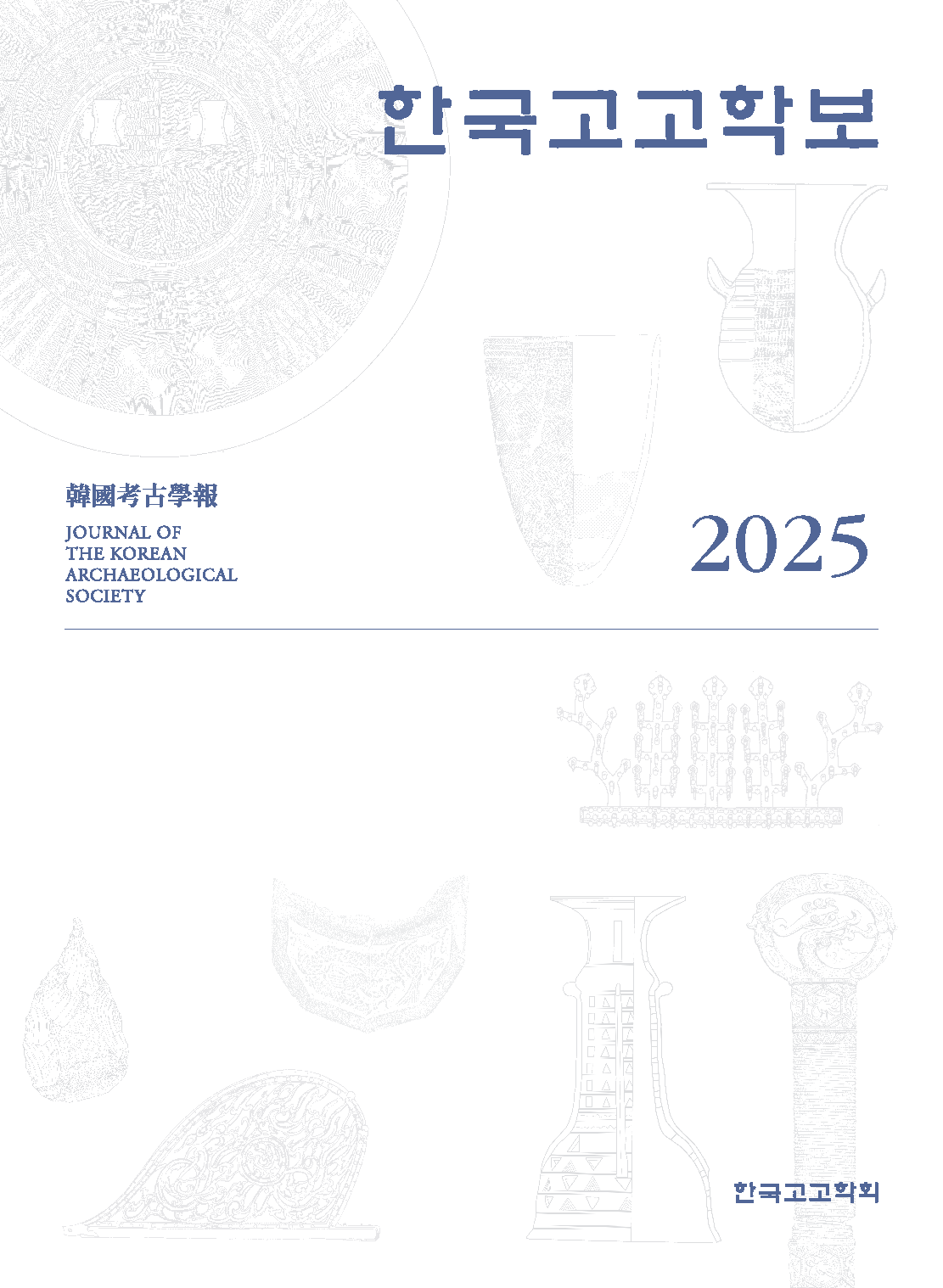학술논문
扶餘 定林寺址 遺蹟의 性格, 그리고 再調査 必要性
이용수 76
- 영문명
- The Character of the Buyeo Jeongnimsa Temple Site and the Necessity of its Re-investigation
- 발행기관
- 한국고고학회
- 저자명
- 간행물 정보
- 『한국고고학보』제135집, 469~503쪽, 전체 35쪽
- 주제분류
- 인문학 > 역사학
- 파일형태
- 발행일자
- 2025.06.30
7,000원
구매일시로부터 72시간 이내에 다운로드 가능합니다.
이 학술논문 정보는 (주)교보문고와 각 발행기관 사이에 저작물 이용 계약이 체결된 것으로, 교보문고를 통해 제공되고 있습니다.

국문 초록
정림사지는 사비도성 최심부에 위치한 입지적 특성이 주목받아 사비기 초기의 사찰로 여겨져 왔으나 최근 연구에서는 6세기 후반 이후에 건립되었을 가능성이 제기되고 있다. 이는 가람의 성토층 하부에서 측정된 7세기 초반의 고지자기 연대와 함께, 사비기 가람 연구가 진전됨에 따라 새로이 도출된 견해이다. 그러나 이와같은 편년을 확정하기 위해서는 고지자기 연대를 지지하는 다른 연대측정 자료가 추가적으로 제시될 필요가있으며, 다른 출토 유물의 양식적 편년을 고려할 때, 신중한 접근이 요구된다.
정림사지 출토 유물은 사비도성과 관련된 편년 연구에 있어 중요한 자료로 활용되어 왔지만, 출토 맥락과 편년 방법론에 대한 재검토가 필요하다. 특히 정림사지의 연대를 확정할 수 있는 편년 자료의 축적을 기다려 유적의 시간적 위치를 확정한 후에 새로이 유물에 대한 편년 작업을 진행할 필요가 있다.
사비도성 정비 과정에 대한 시계열적 해석이 어려운 주된 이유는 천도 전후의 유적 양상이 명확히 확인되지 않기 때문이다. 이는 후대의 재점유 과정에서 대부분의 선행 유구가 훼손된 영향이 크다. 그러나 일부유적에서는 사비기 이른 단계와 늦은 단계의 점유 흔적이 모두 확인되며, 특정 단계의 유적만 발견되는 경우도 있다. 도성 내 유적들 간에 관찰되는 점유 시기와 강도의 차이는 당시 고대인들의 입지 선호도를 반영하는현상으로 볼 수 있다. 이를 구체적으로 규명하기 위해서는 층서적으로 선행 유구가 명확히 구분되는 유적에대한 조사가 필수적이다. 정림사지가 위치한 금성산 서쪽 사면이 사비도성 내 택지 중 최적의 입지로 평가되는 것을 감안하면 이 지점은 천도 이전부터 지속적인 점유가 이루어졌을 가능성이 있다.
정림사지 유적의 명확한 성격 규명뿐만 아니라, 사비도성의 정비 과정을 고고학적으로 해명하기 위해서는 현 단계에서 정림사지에 대한 재조사가 필요하다.
영문 초록
The Jeongnimsa Temple site, due to its prime location in the heart of the Sabi Capital City, has traditionally been considered an early Sabi period temple. However, recent research suggests a possible construction date after the late 6th century. This revised view is based on paleomagnetic dating from the early 7th century found beneath the temple's embankment layer, along with new findings from advanced studies on Sabi period temple layouts (garam).
Nevertheless, to definitively establish this later chronology, additional supporting dating evidence is required, and a cautious approach is warranted, particularly when considering the stylistic chronology of artifacts such as Chinese porcelain and Silla pottery. While artifacts excavated from Jeongnimsa have been crucial for chronological studies of the Sabi Capital City, a re-examination of their excavation contexts and dating methodologies is necessary. Specifically, it is imperative to first establish the temporal position of the site by accumulating definitive chronological data for Jeongnimsa before undertaking a new chronological assessment of its artifacts.
A major challenge in the chronological interpretation of the Sabi Capital City’s development is the lack of clearly identified archaeological phases immediately before and after the capital’s relocation, likely due to the destruction of earlier features during subsequent reoccupations. However, some sites within the capital exhibit evidence of both early and late Sabi period occupation, while others reveal only specific phases. These variations in occupation timing and intensity among sites likely reflect the locational preferences of the ancient inhabitants. To further investigate this, excavations of sites with clearly stratified earlier features are essential.
Considering that the western slope of Geumseongsan Mountain, where Jeongnimsa Temple is located, is regarded as a prime residential area within the Sabi Capital City, it is plausible that this area was continuously occupied even before the capital’s relocation. Therefore, a re-investigation of the Jeongnimsa Temple site is crucial at this stage, not only to clarify its distinct character but also to archaeologically elucidate the development process of the Sabi Capital City.
목차
Ⅰ. 머리말
Ⅱ. 정림사지 유적의 성격
Ⅲ. 정림사지 유적의 재조사 필요성
Ⅳ. 맺음말
참고문헌
해당간행물 수록 논문
참고문헌
관련논문
인문학 > 역사학분야 NEW
- 노예제와 식민지 기념물에 대한 기억 논쟁: 콜베르와 갈리에니 동상 사례 연구
- 제2차 국공내전기 중국공산당의 승리 요인 분석
- 혜원 신윤복의 산수화 연구 Ⅱ - 단원 김홍도와의 관계와 영향을 중심으로
최근 이용한 논문
교보eBook 첫 방문을 환영 합니다!

신규가입 혜택 지급이 완료 되었습니다.
바로 사용 가능한 교보e캐시 1,000원 (유효기간 7일)
지금 바로 교보eBook의 다양한 콘텐츠를 이용해 보세요!



